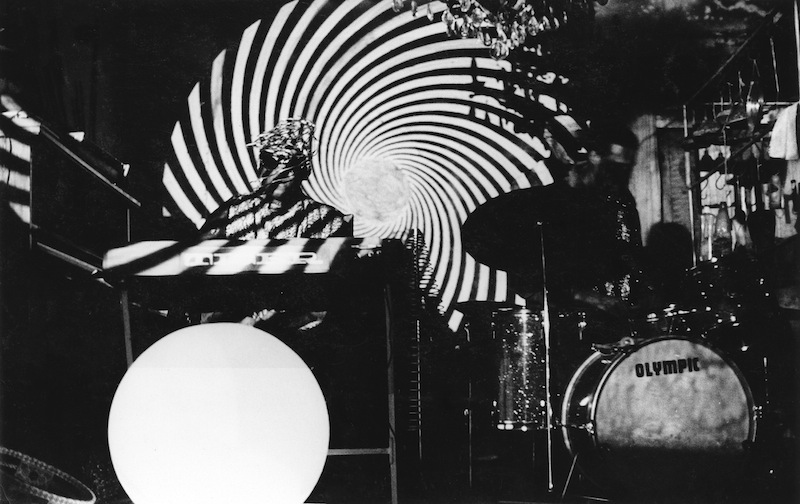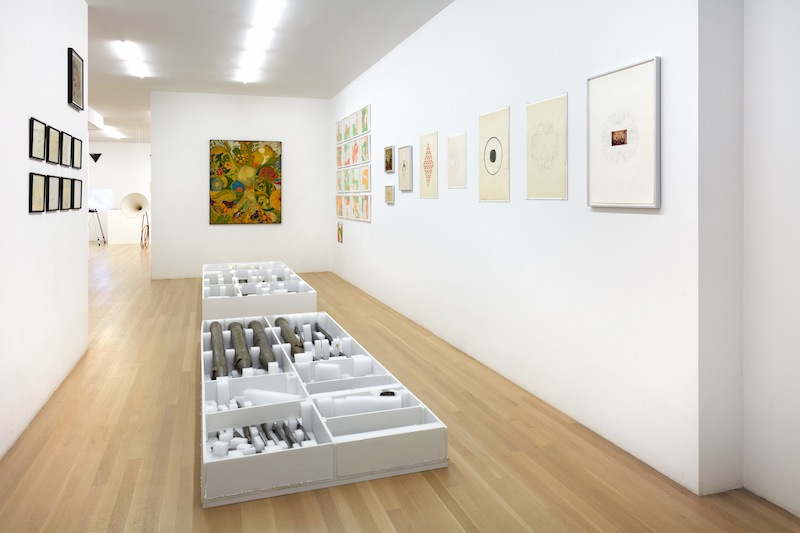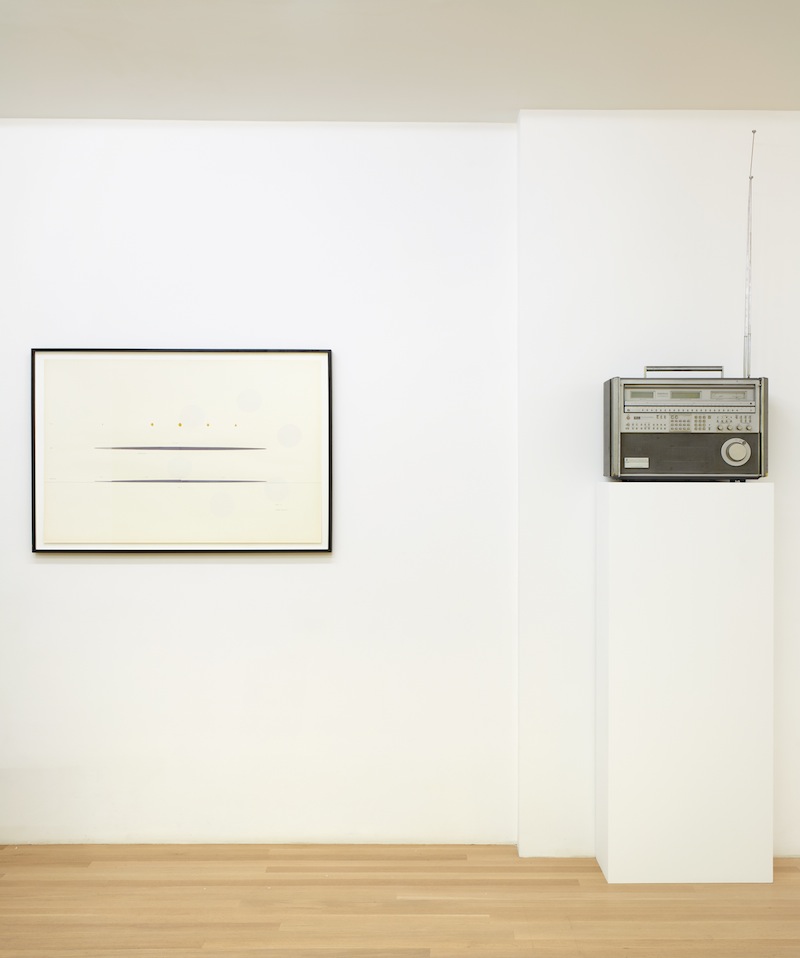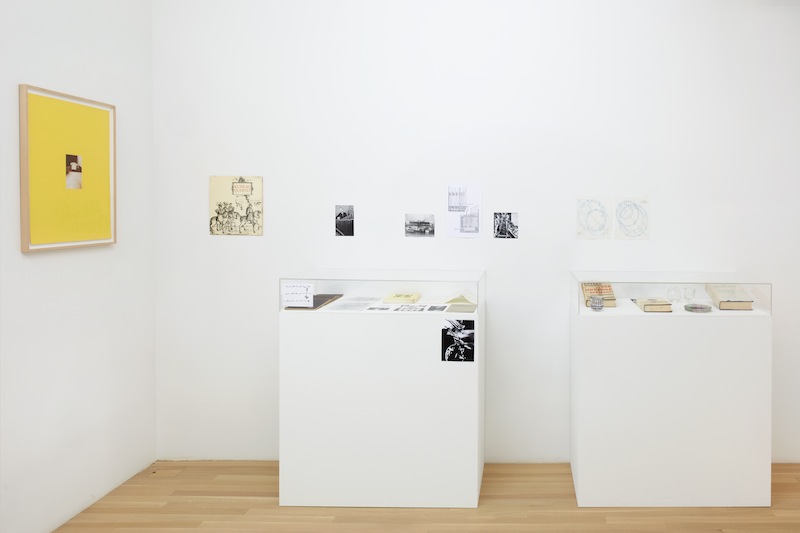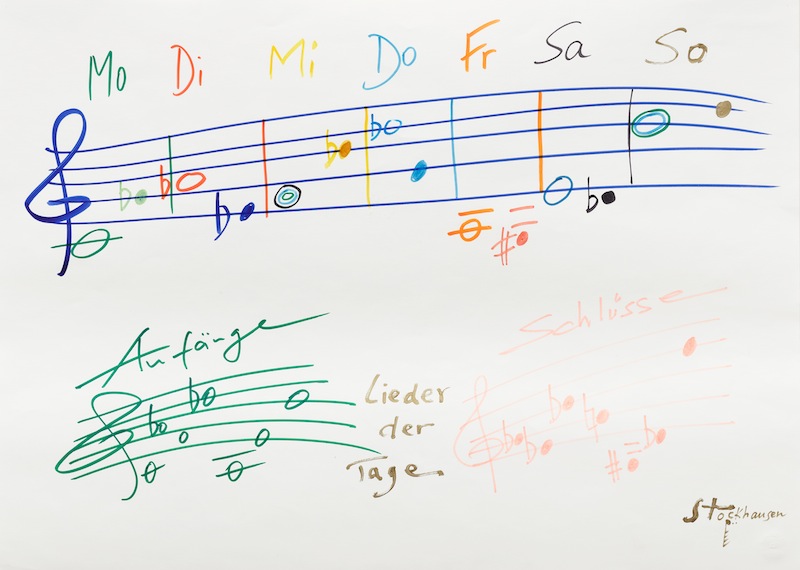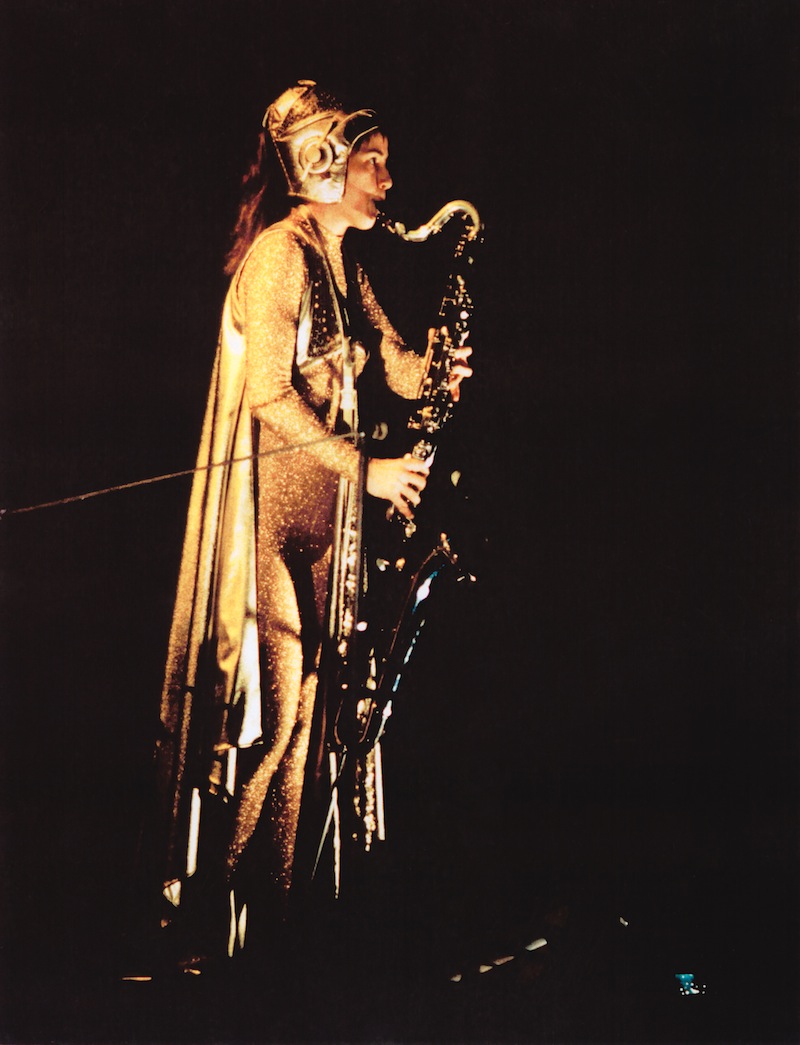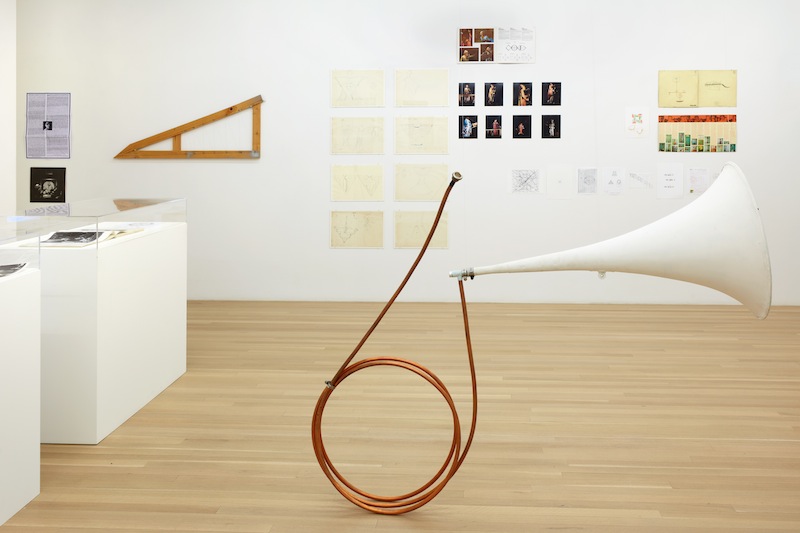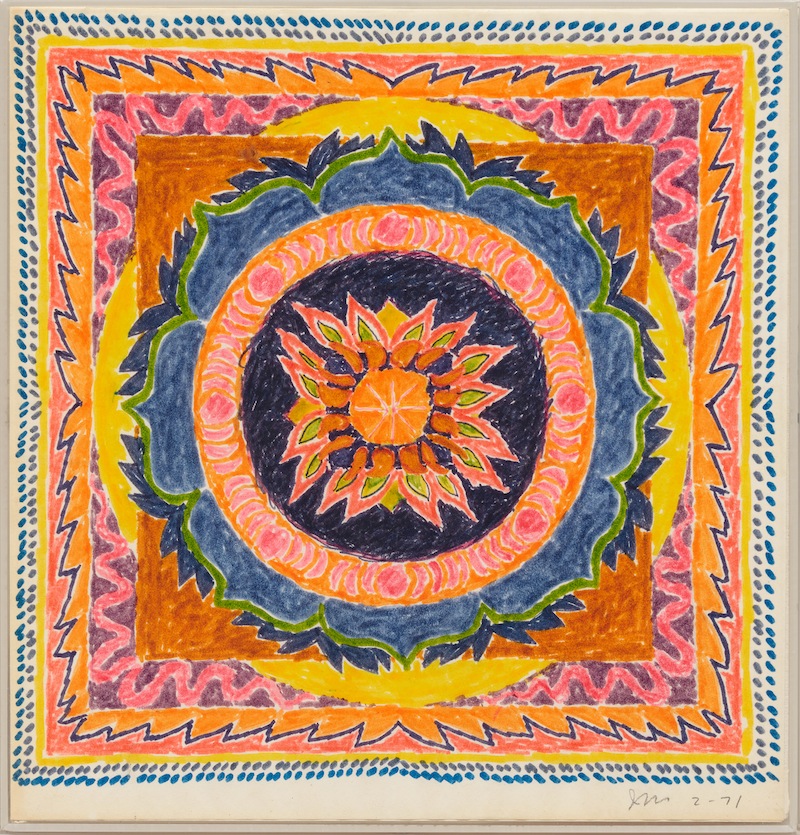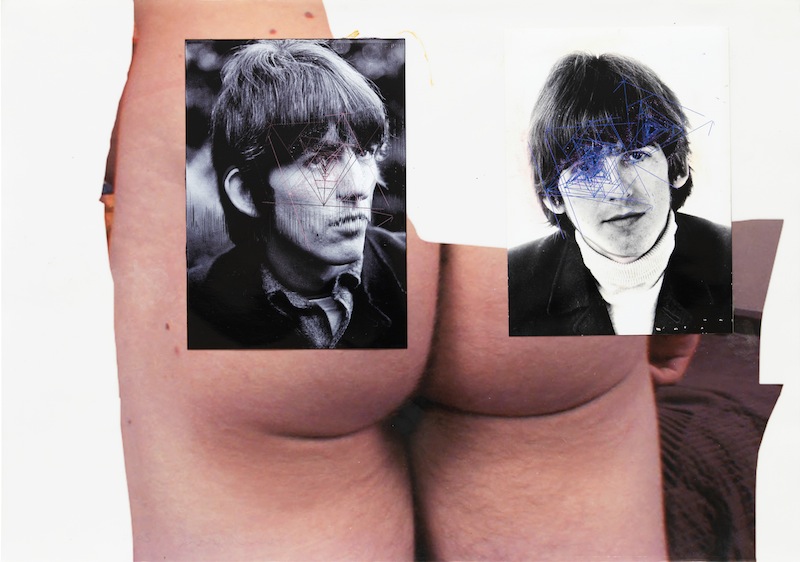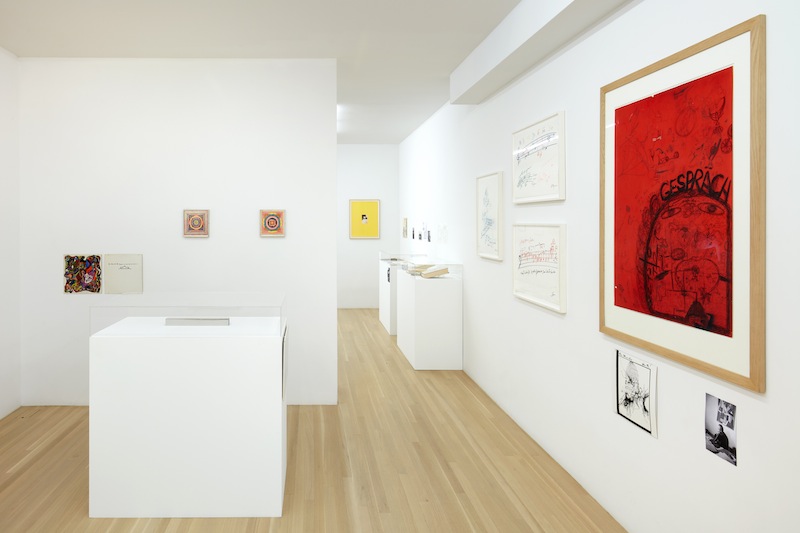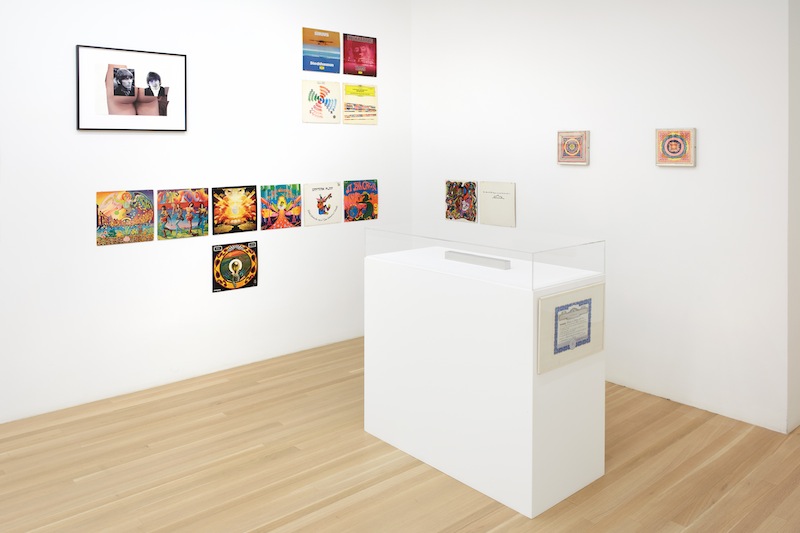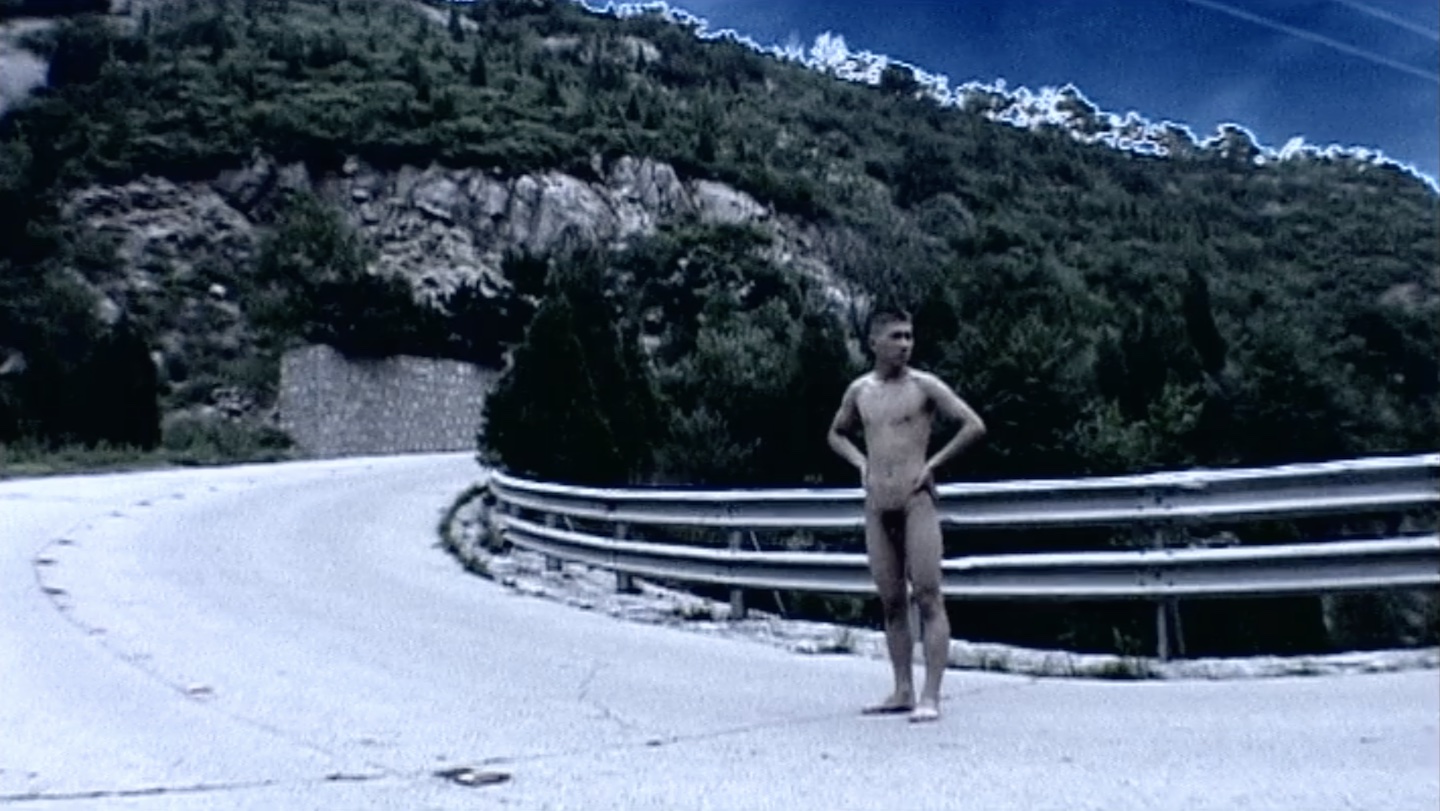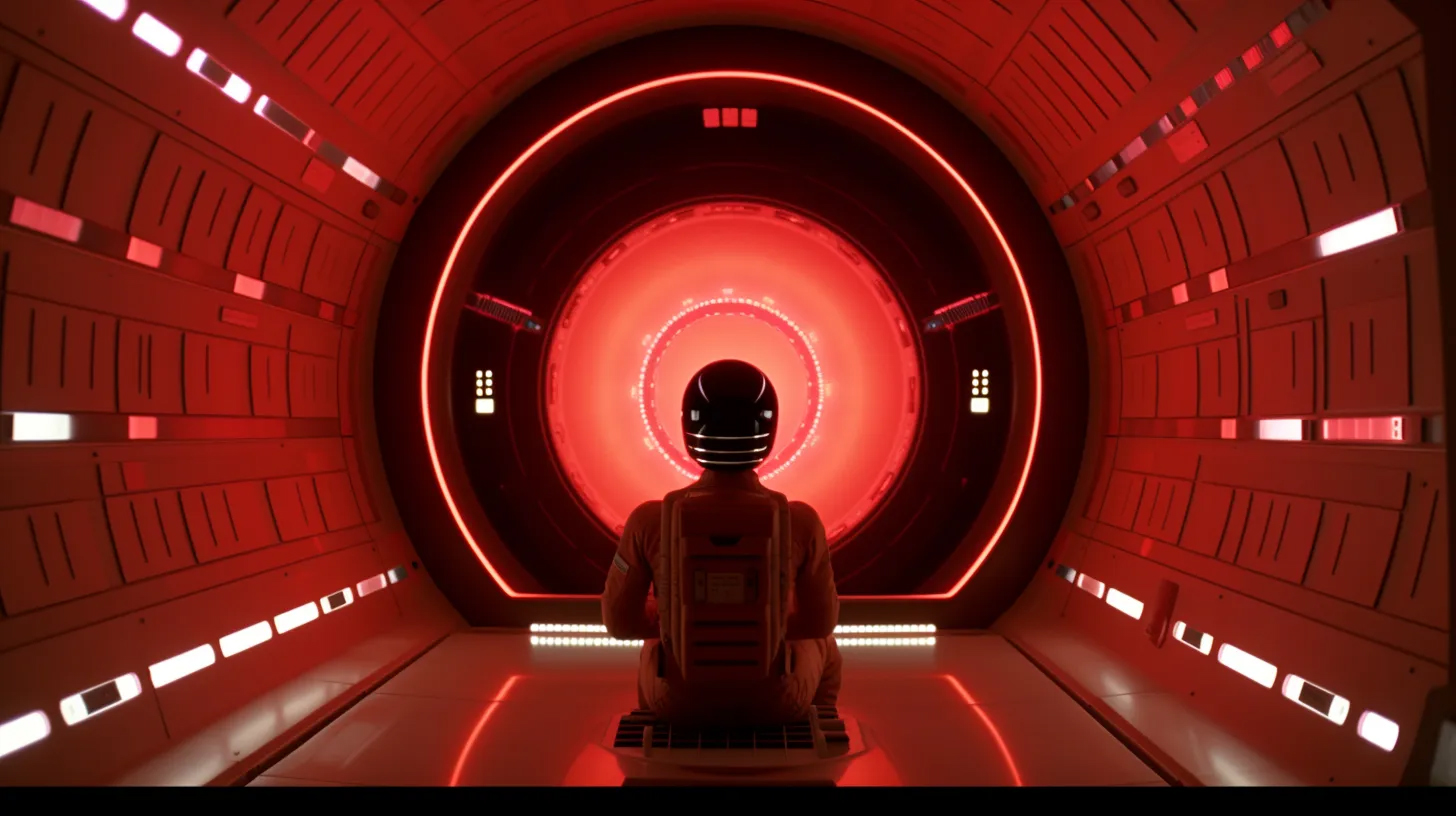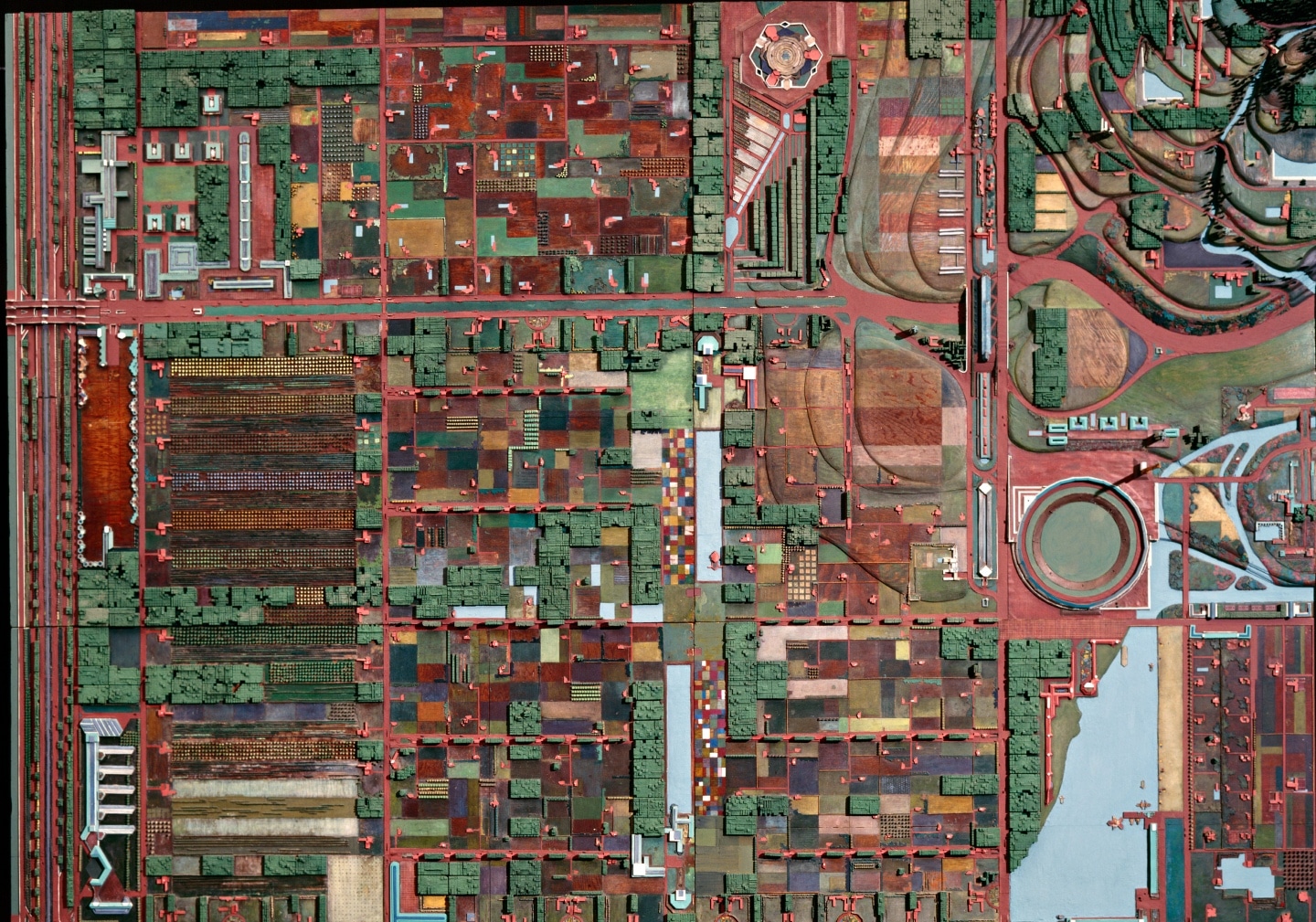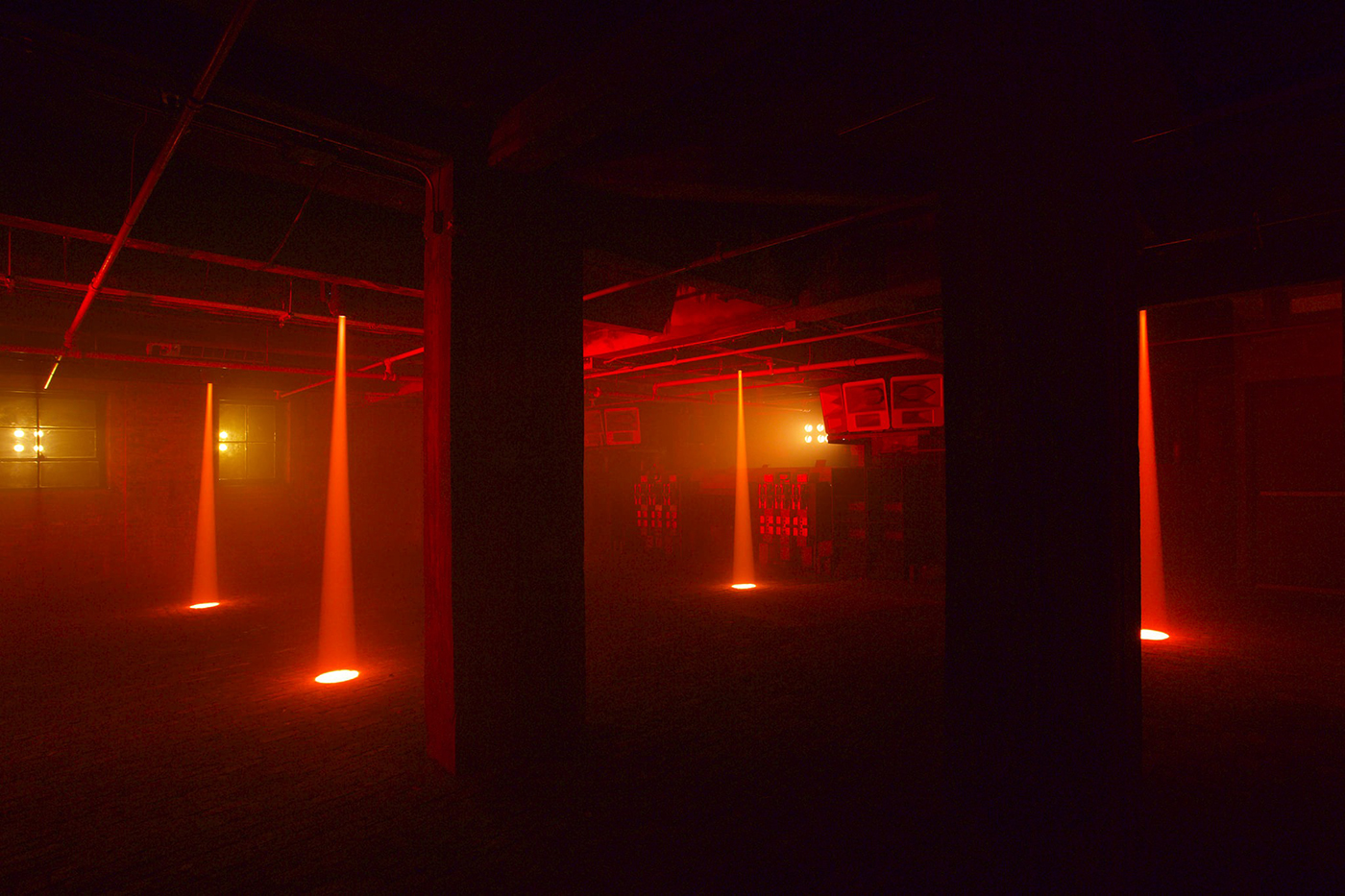November 2, 2017–January 13, 2018
There is an astonishing sequence in Robert Mugge’s 1980 film Sun Ra: A Joyful Noise, a documentary about the great intergalactic avant-garde jazz musician, artist, and poet. It occurs when Sun Ra is playing a solo during his band’s—the Arkestra—performance in a Baltimore ballroom. Sun Ra stands in front of his synthesizer and makes a glorious cacophony of smashed and pounded notes. He then spins and turns his back to the keyboard, playing it with the tops of his fingers and hands. The music is quite literally meant to transport: Sun Ra believed that life on this planet was doomed, especially for people of African descent, and that his music and philosophy would carry people to other worlds. Even Jupiter would be better than the ongoing slave ship called Earth.
Sun Ra features prominently in “Cosmic Communities: Coming Out Into Outer Space—Homofuturism, Applied Psychedelia & Magic Connectivity,” a sprawling, ambitious, and occasionally overreaching exhibition organized by Diedrich Diederichsen and Christopher Müller for Galerie Buchholz. Eight Sun Ra vinyl record sleeves are included along with three of his original designs for other album covers—two in red swathes and lettering, one in shiny gold and black. Nearby vitrines contain over 50 black-and-white photographs of the Sun Ra Arkestra performing in Egypt in 1971; the same images are also digitally projected on the gallery wall. Sun Ra’s sexuality is cloaked, and possibly closeted, in mystery, and he probably would have described his thinking as closer to science than magic. But he certainly was a futurist, if only because he considered the past and present to be versions of servitude, both external and internalized. In other words, Sun Ra was both an Afrofuturist and an Afropessimist long before those categories were articulated.
Much of the work in “Cosmic Communities” might be compared against its extended title this way, i.e., checking off the various themes referenced. The result is an exhibition that functions a bit more as an encyclopedia than as the vision the show’s title and expansive press release invoke. Its archival quality further confirms this. Nevertheless, the impressive historical arc on display moves from male collectivism (the group formed around German poet Stefan George), to utopianism (the cosmic symmetries of the twentieth-century Pythagorean Hans Kayser, represented by two circular drawings that nicely parallel a pair by John Coltrane diagramming “the circle of fifths”), to psychedelia (LSD-addled Funkadelic record-cover design), to weird science (an early [1982]—and potentially functional—radio from Isa Genzken’s “World Receiver” series).
Despite such seemingly disparate examples, various links can be traced among them, whether biographical, formal, or ideological, with music being a primary connection. In fact, the exhibition anchors itself in four musical figures: Karlheinz Stockhausen, Sun Ra, Funkadelic, and Hans Henny Jahnn. The last of these warrants a show of his own, and his influence dominates the exhibition’s first gallery. A writer, aspiring architect, and self-taught organ builder, Jahnn and his partner, Gottlieb Harms, were at the center of a bisexual commune named Ugrino established in Germany circa 1920. Their intellectual and aesthetic aspirations are represented in the exhibition with designs and photographs of Jahnn’s pipe organ, self-published books, maps of the Ugrino community, a little sketch for the Ugrino insignia, and a pamphlet outlining Jahnn and Harms’s theory of a “special wind-regulation system” for the organ.
Creating additional resonances, Diederichsen and Müller include Lutz Bacher’s Organ Pipes (2014), which features an example of the instrument’s long metal tubes disassembled and packed in rows in two large foamcore containers and installed in the middle of the gallery. The large sculpture echoes Tony Conrad’s oversized and distorted trumpet, Fair Ground Electric Horn (2003), in the center of the next room. These are the kinds of chains of associations propelling the exhibition, detouring through various curiosities: a psychedelic Fats Domino 1968 album cover; two small, colorful John McCracken mandala-like drawings; and a stainless-steel High Energy Bar (1966) from Walter de Maria’s unlimited series of the same name. Yet the exhibition rewards the most where it lands solidly: with Sun Ra, Jahnn, or materials relating to Stockhausen’s sci-fi music-theater composition Sirius (1975–1977), including his second wife Mary Bauermeister’s sketches for the costume designs that are somewhere between Russian Constructivism and a choir from the future.
Looming above much of this on the back wall of the second gallery are three pieces (each 2008) from Jutta Koether’s series “The Necessity of Multiple Inconsistent Fantasies”—glossy black, one-foot triangles with frozen liquid glass seeped from their edges. Their opacity speaks to the crushing of vision that shines brightly elsewhere in the exhibition, whether applied, delusional, or drug induced. At the same time—and given the context one cannot help but think of Stanley Kubrick’s black monolith in 2001: A Space Odyssey (1968)—they aim to wipe the slate clean for new approaches to the future. At a moment in history when citizens and subjects on all points of the political spectrum manifest politics as a set of reactions, Koether’s emphasis on the “necessity” of imaginative life feels especially expedient, as does the general outlook of “Cosmic Communities.” Never has the future been in such a rush to meet us.
